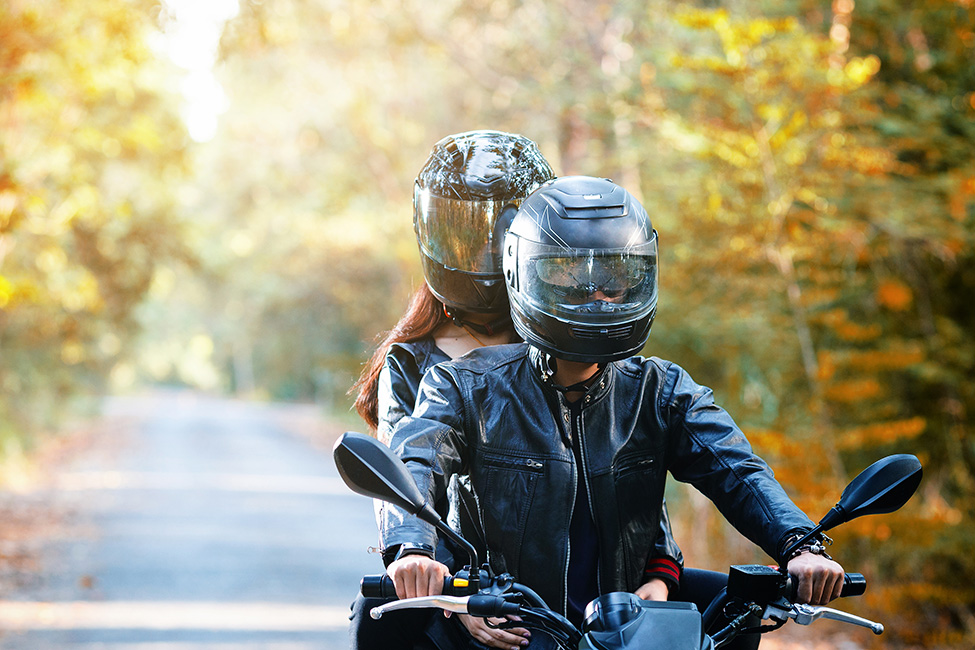It is important that the passenger be in a stable, comfortable and dynamic position. That means that they should have the same points of support as the rider: hands, knees and feet.
Their feet should be placed flat on the footrest and not be on tip toes. Their knees should be around the legs of the rider, thighs slightly tense and abs tense too. Their knees and abs should prevent them from lurching forwards (when the bike brakes) or backwards (during acceleration). Try this simple test: they should be able to lift their buttocks off the seat without using their hands.
The hands should only be used to restrain the upper body, which will ease the tension on the arms and they will tire less quickly. In general, the passenger should hold onto the rider and/or hold onto the handles on the side or the rear of the motorcycle.
The passenger can of course change position during the ride, but not abruptly or suddenly. When the bike is at standstill, the passenger should warn the rider they want to get on or off and if the motorcycle is moving, the passenger should change position using small, smooth movements. If the passenger needs to change their posture drastically, they should ask the rider to pull over and stop.
Passengers on a racing bike, for example, which requires them to lean forwards, will tend to hold onto the rider. To avoid giving him or her helmet butts, one solution is to place one hand on the petrol tank. This will enable the passenger to prevent themselves from lurching forwards. Similarly, if the passenger is worried about being pulled backwards when the bike accelerates hard, they should place their hand to the rear on a handle or on the saddle with the arm stretched and locked firm whenever the bike accelerates. On a touring bike, the passenger’s position will very probably be comfortably upright whether you’re in town or on the open road, although the latter does generate turbulence at high speeds. In such a case, the passenger should lean towards the rider to protect themselves from the wind.
Bear in mind that the greatest risk of a fall is when the bike is at standstill. The passenger should warn the driver whenever they get on or off the bike. Warn them not to be tempted to put their feet on the ground when the bike is stopped at a traffic light or a stop sign. The rider is the one in charge of keeping the bike upright.
When going round bends, the passenger should follow the movement by leaning in the same direction. Approach the first few bends smoothly and slowly so that both the rider and the passenger can find their balance. For the comfort of both, communicate before and during the ride. Talk about which postures are adapted to which conditions, how long the ride will last, possible inconveniences and how to indicate you want to stop. The rider should remember that the passenger will get colder and fatigue sooner than he or she will.
